VERY RARE! WWII Original 1944 Operation Torch "CONFIDENTIAL" Landings in North Africa D-Day Combat Narrative Intelligence Report with Maps
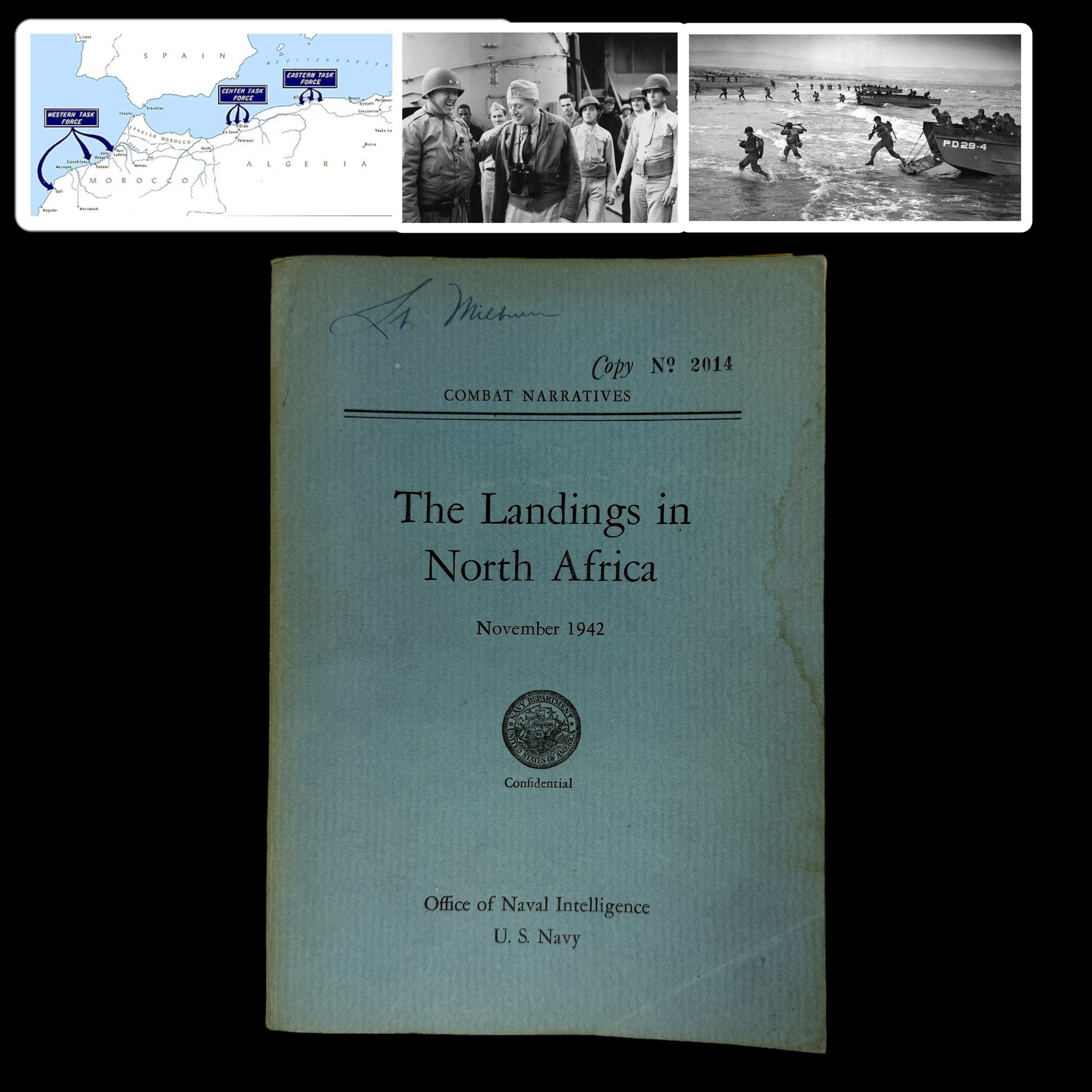
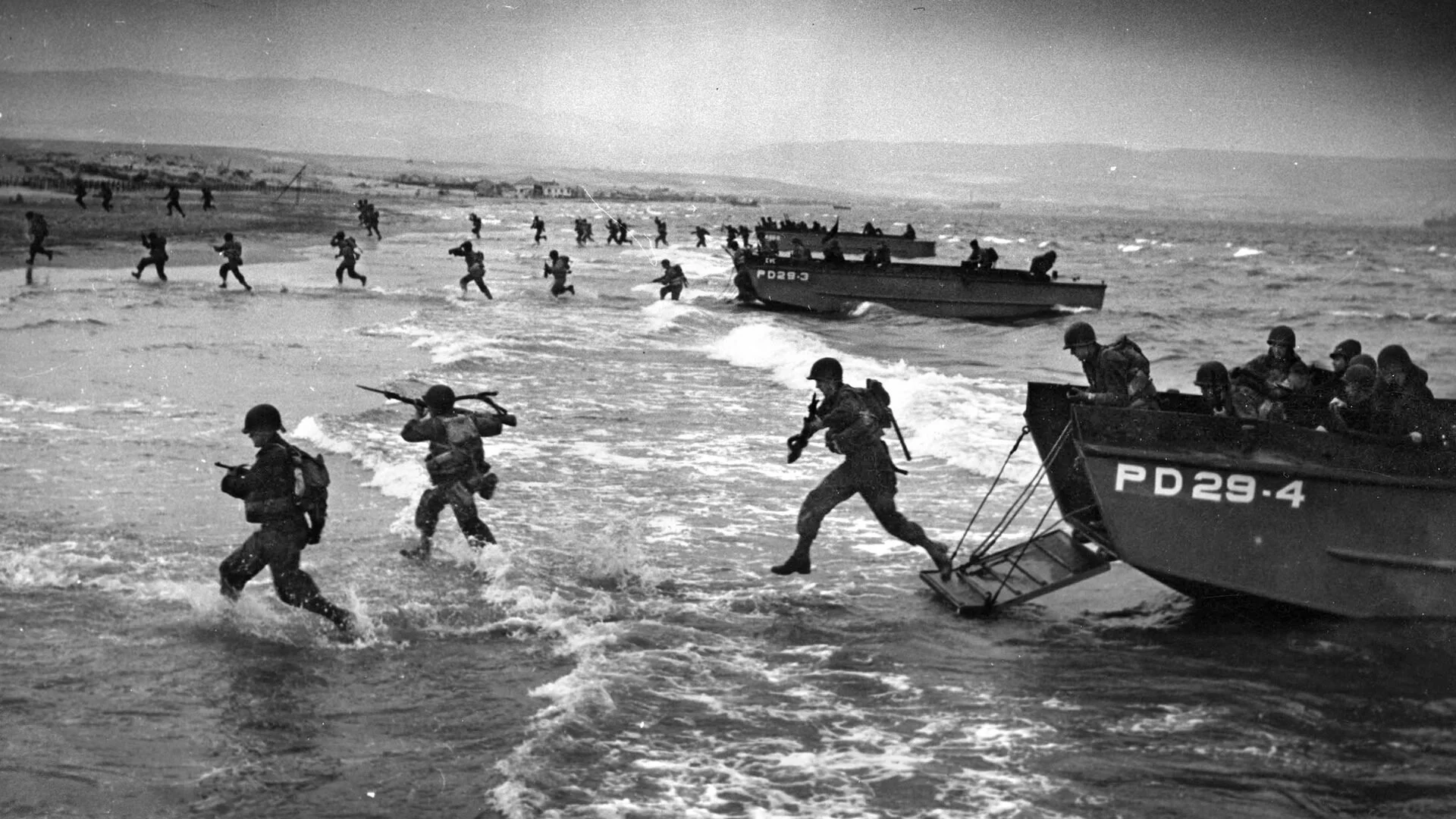


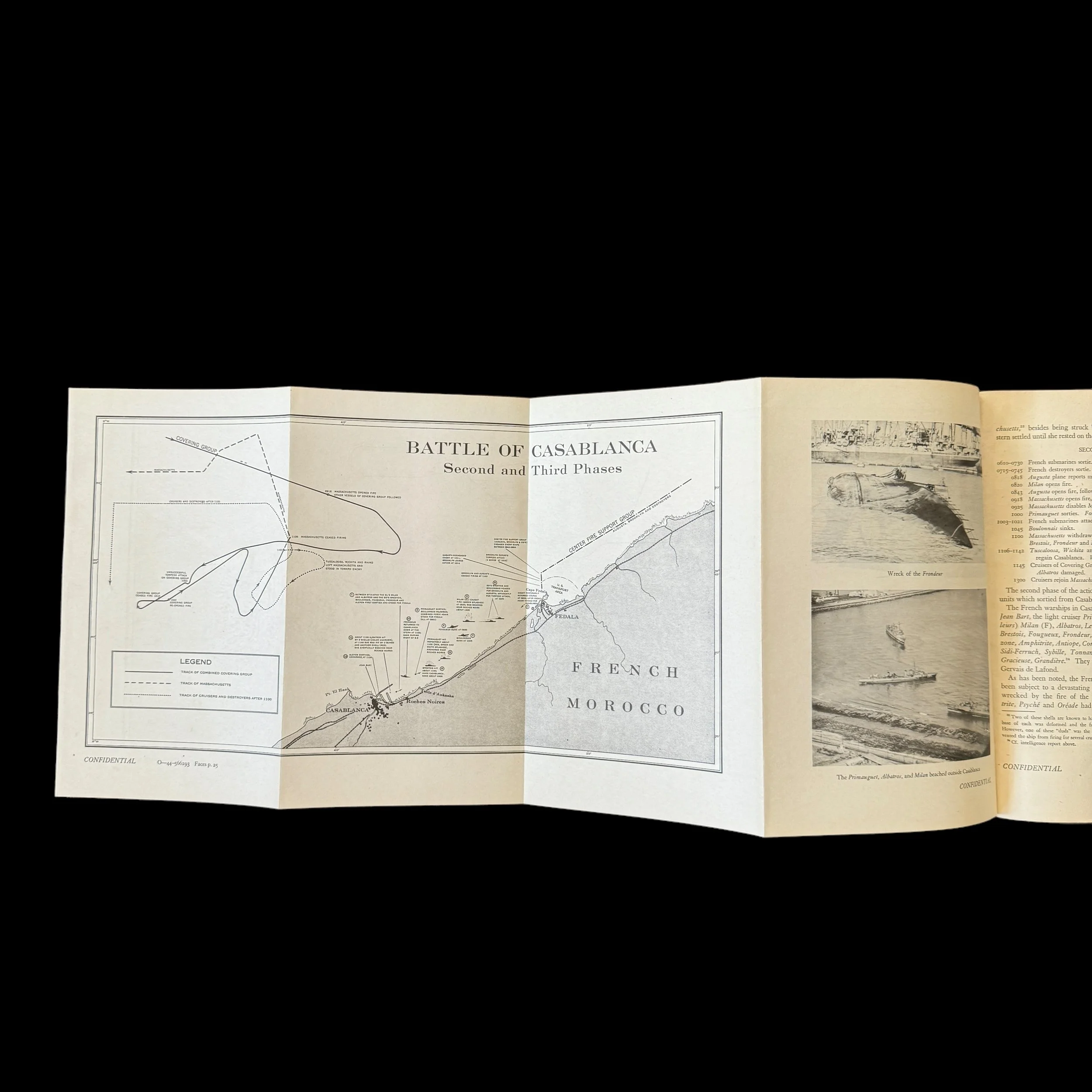









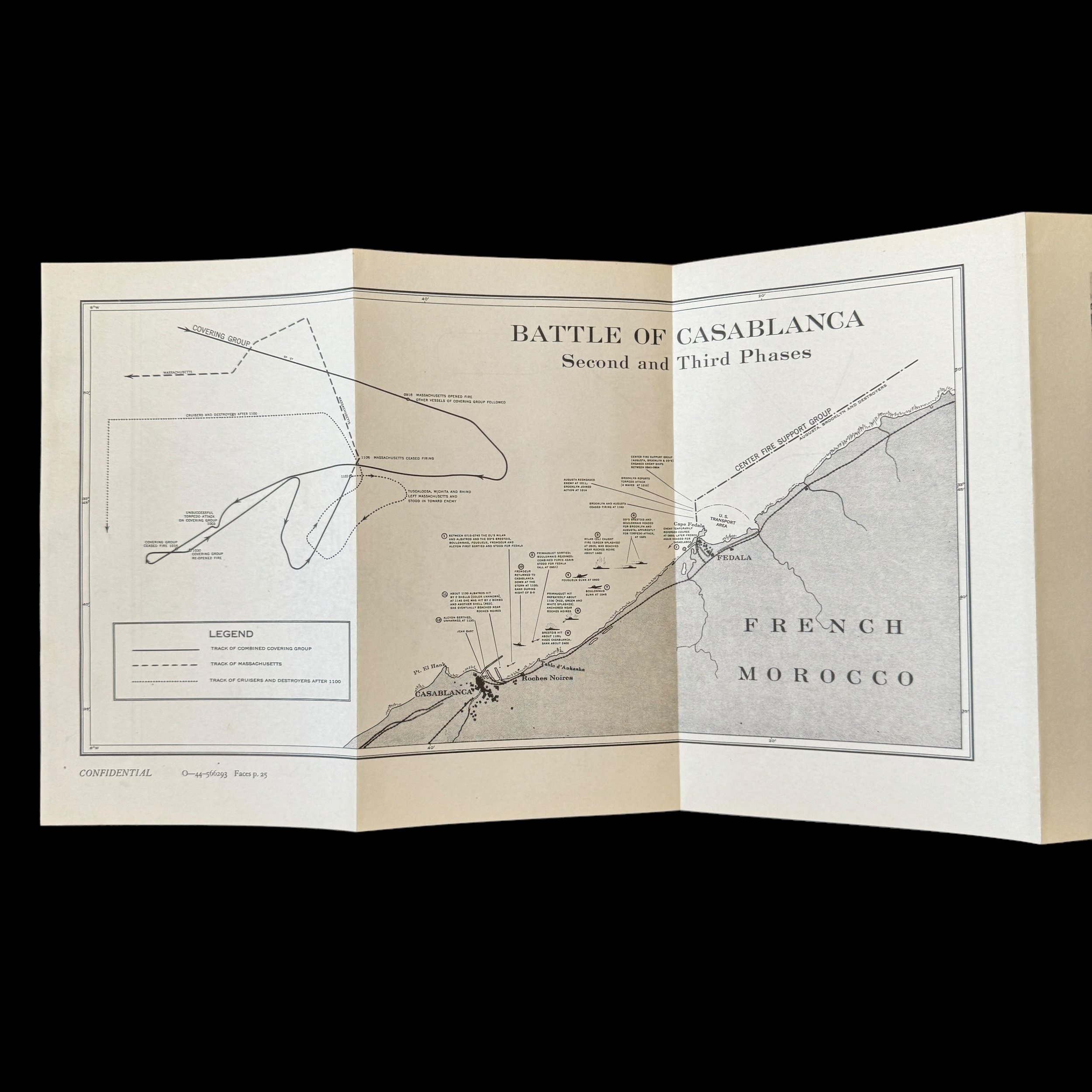

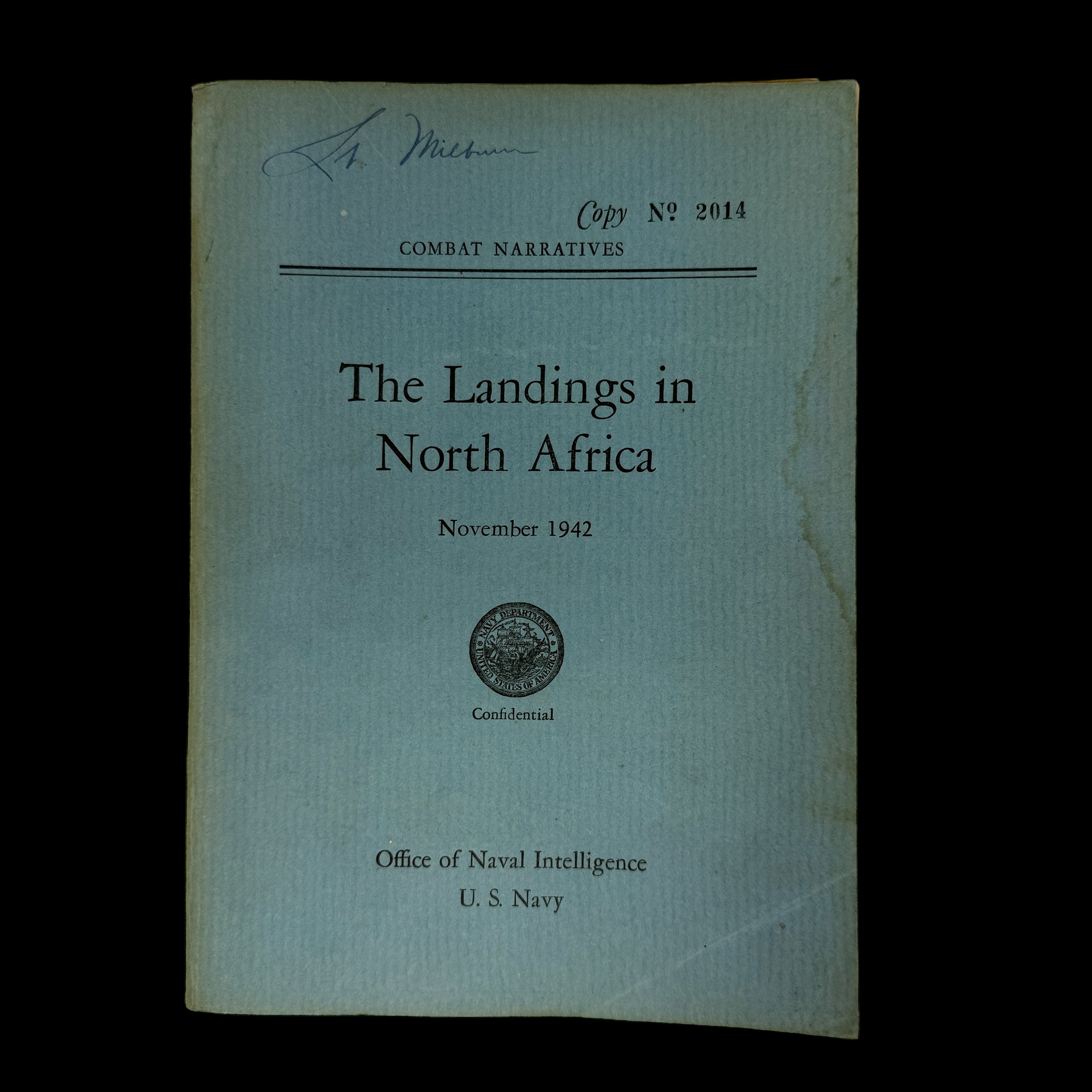




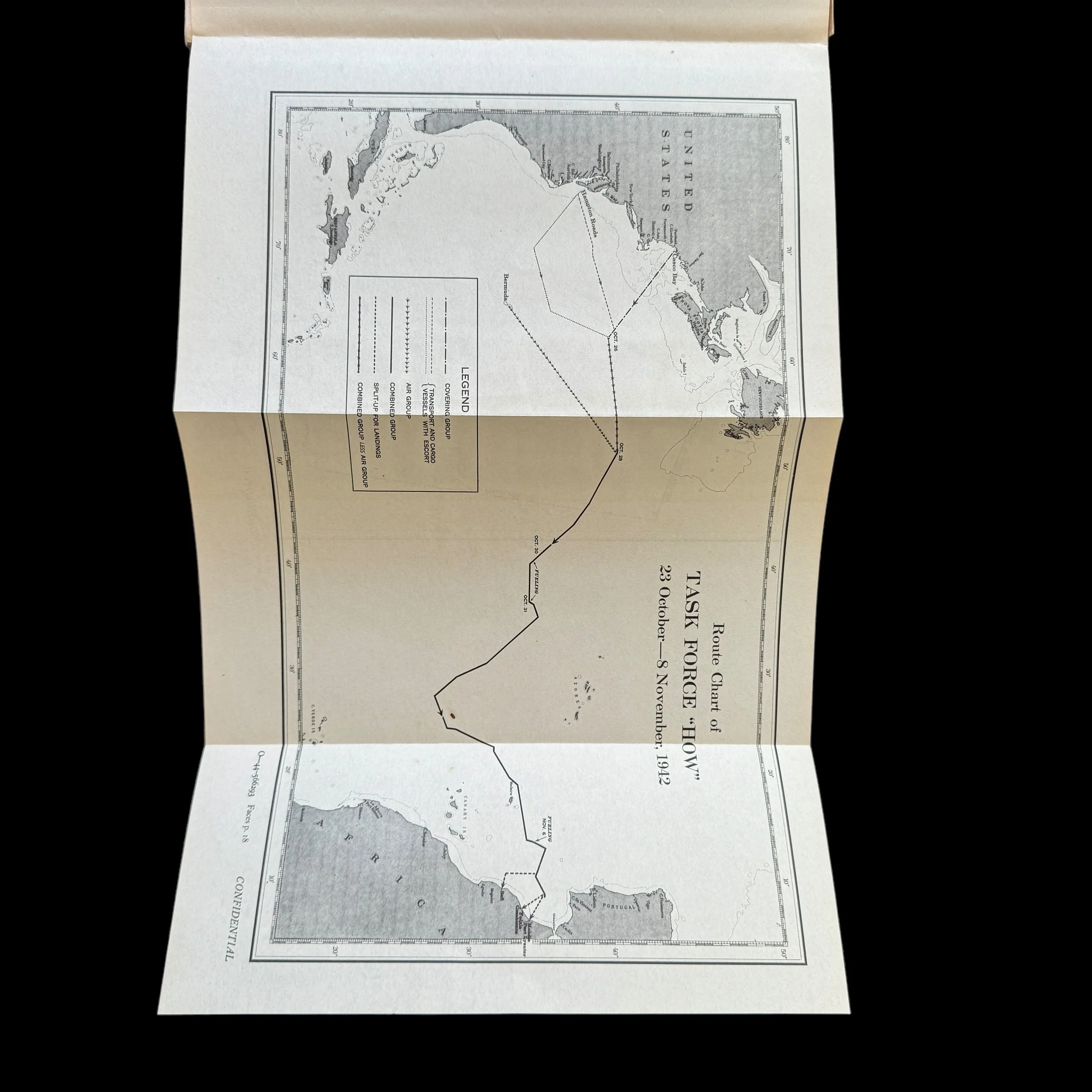










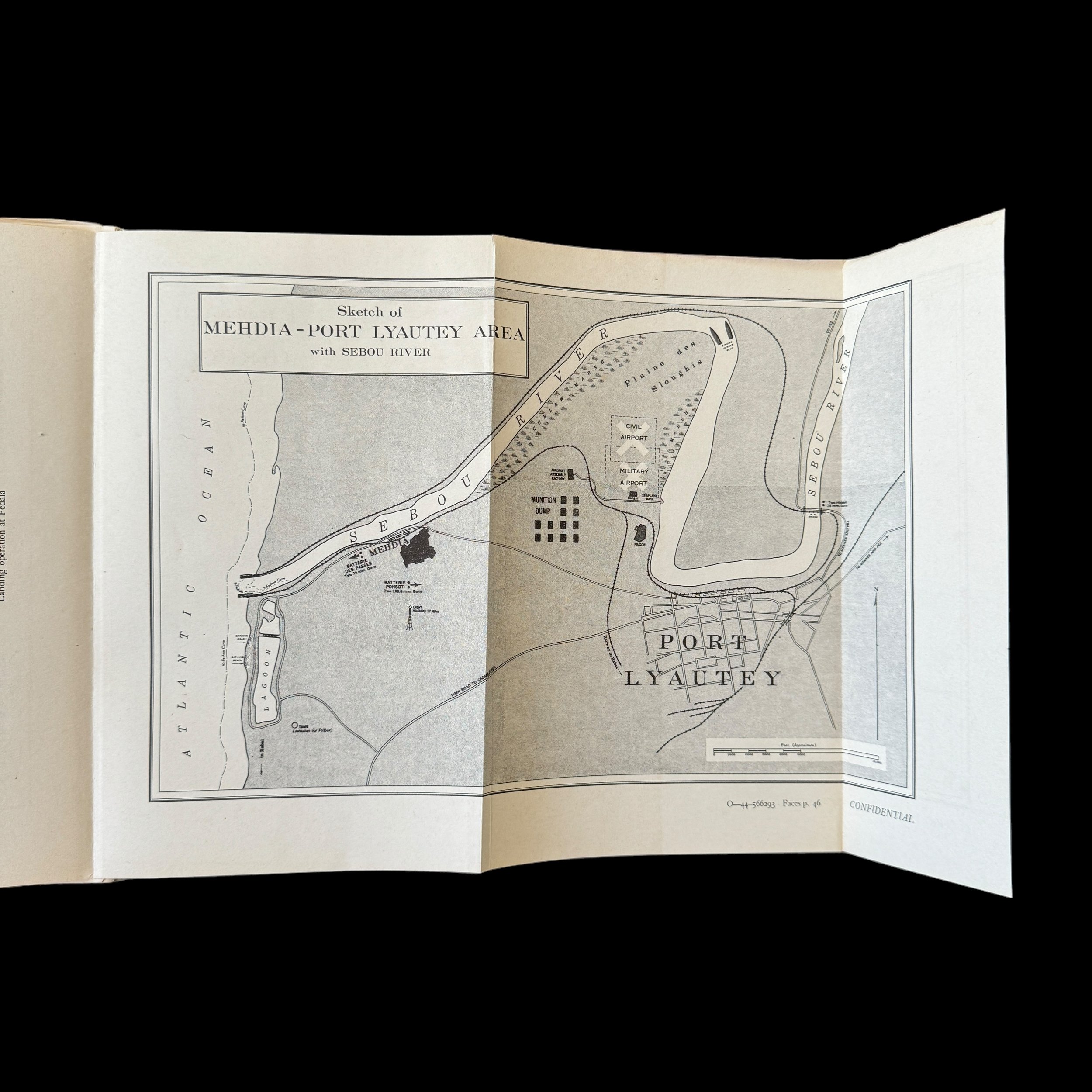















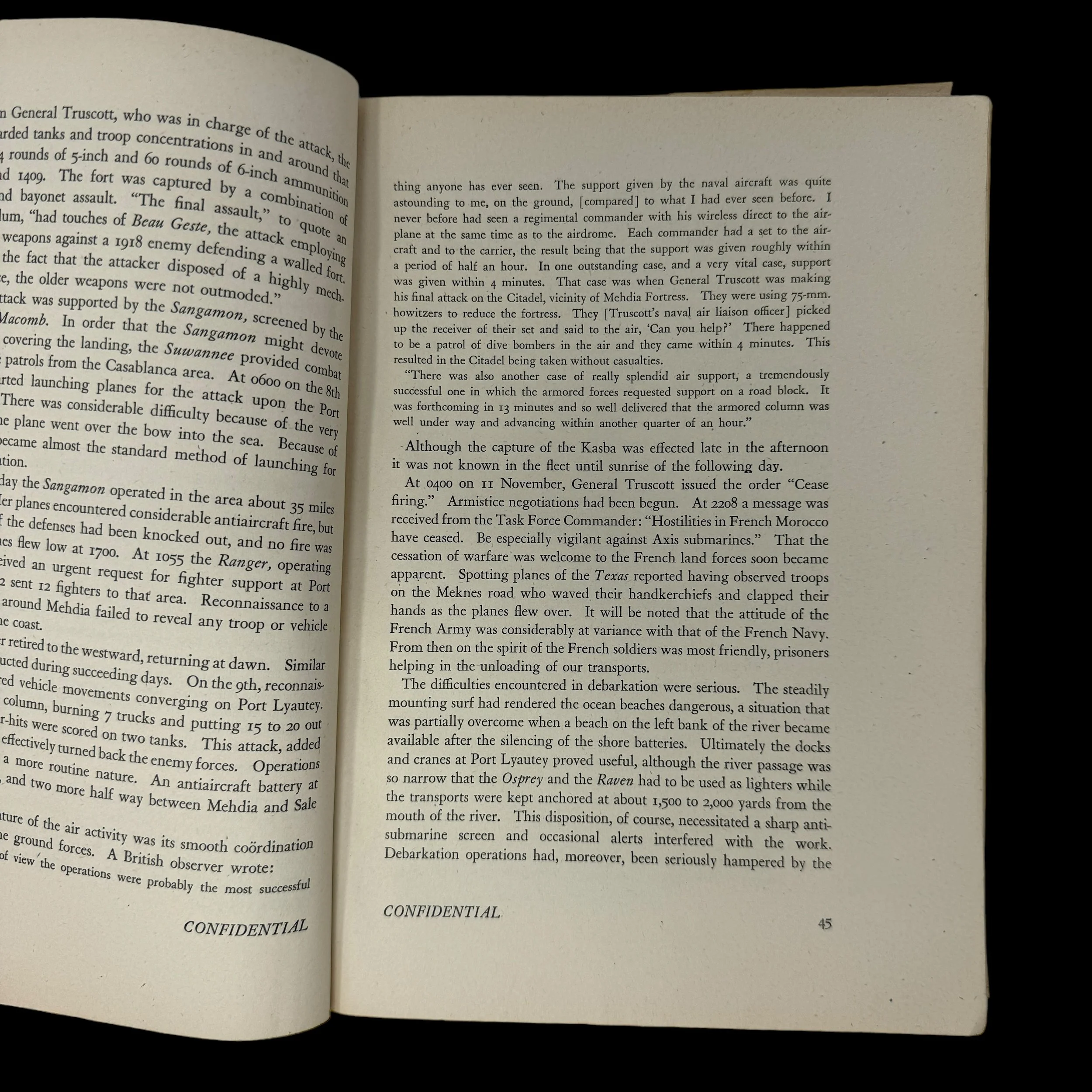

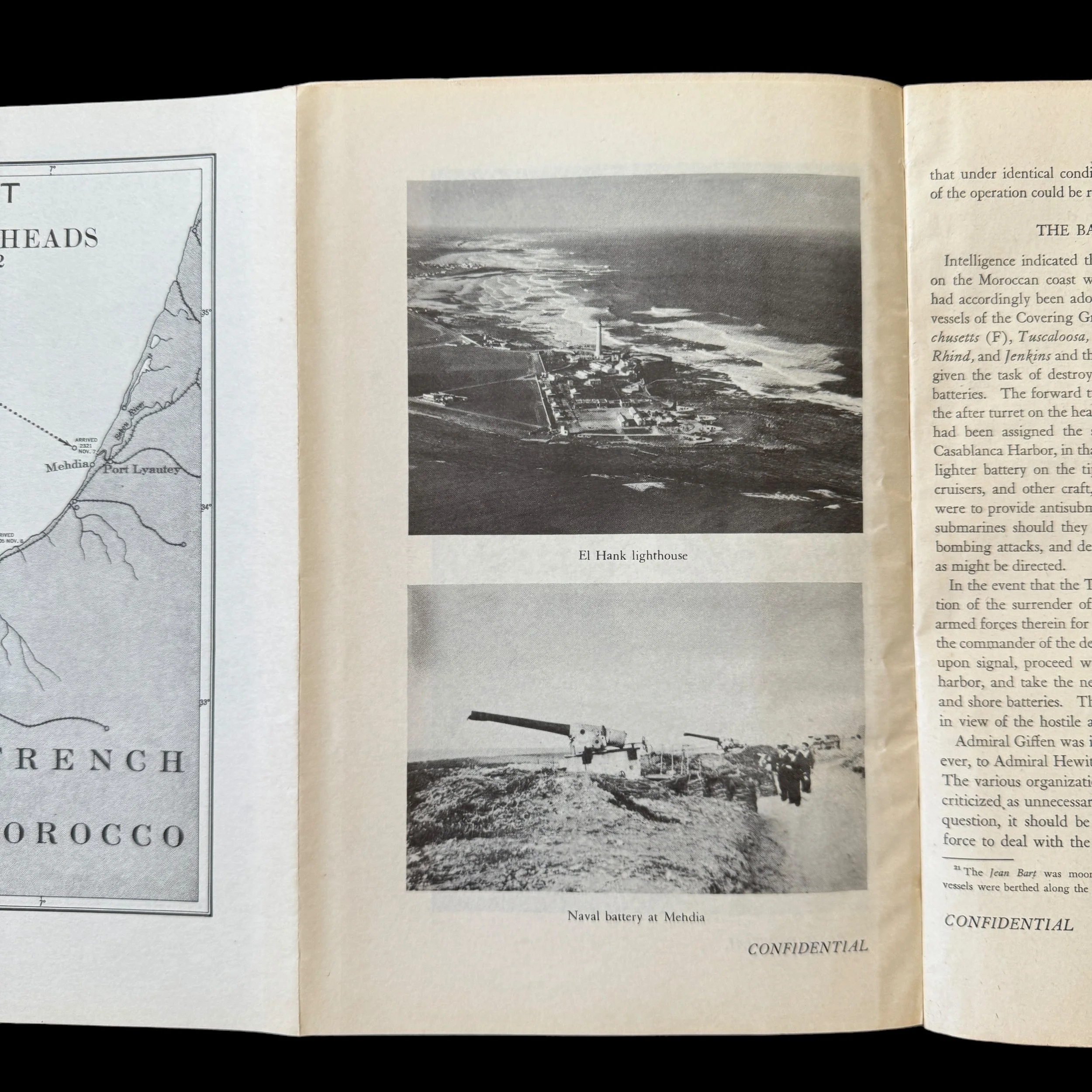





VERY RARE! WWII Original 1944 Operation Torch "CONFIDENTIAL" Landings in North Africa D-Day Combat Narrative Intelligence Report with Maps
Comes with a hand-signed C.O.A.
This extremely rare and museum-grade WWII artifact is an original 1944 dated “CONFIDENTIAL” marked Official U.S. Navy intelligence report (with accompanying CONFIDENTIAL battle maps) of the “The Landings in North Africa”.
These CONFIDENTIAL “Combat Narrative” of Operation Torch intelligence reports were created under the of the Commander in Chief, U.S. Fleet and Chief of Naval Operations and were to be read by commissioned officers and high-ranking officials of the USN.
These combat narratives provided the most updated intelligence of battle operations and were meant to provide USN officers and high-ranking Navy officials with CONFIDENTIAL battle accounts, reports, and intelligence to inform future operations and their decisions in battle.
Less than 3,000 of each report was produced and most did not survive as it is noted by REAR ADMIRAL, U.S.N. Director of Naval Intelligence to “DESTROY OR BURN THE COPIES ONCE THEY HAVE BEEN READ AND HAVE SURVED THEIR PURPOSE”.
This specific “The Landings in North Africa” report was secretly kept by Lt. Milburn which is why it is one of only a small handful or original reports that are still known to exist today.
Operation Torch:
Operation Torch was a pivotal turning point in World War II, marking the first major amphibious assault undertaken by the Allied forces against Axis-controlled territory. Launched on November 8, 1942, it aimed to secure North Africa, particularly Morocco, Algeria, and Tunisia, and open a vital supply route to the besieged Allied forces in the Mediterranean theater. The operation's success not only provided a crucial foothold for further Allied advances into Europe but also altered the strategic landscape of the entire war.
By November 1942, the Axis powers had gained significant control over North Africa, posing a direct threat to Allied interests in the Mediterranean region. The Vichy French government, aligned with Nazi Germany, controlled much of Morocco and Algeria, while Axis forces, under the command of General Erwin Rommel, had made substantial gains in neighboring Libya and Egypt. The Allies recognized the urgent need to secure North Africa to safeguard the vital sea routes and prevent Axis expansion into the Middle East.
Operation Torch was conceived as a joint Anglo-American operation under the overall command of American General Dwight D. Eisenhower. Its primary objectives were to seize key ports and airfields in Morocco and Algeria, establish a secure base of operations, and facilitate cooperation with local resistance forces. The success of the operation hinged on meticulous planning, coordination, and surprise.
The assault on November 8, 1942, saw Allied forces landing on multiple beaches in Morocco and Algeria simultaneously. Three task forces, codenamed Western, Center, and Eastern, spearheaded the operation. Western Task Force, commanded by American General George S. Patton, targeted the key port cities of Casablanca, Fedala, and Port-Lyautey in Morocco. Center Task Force, under the leadership of Major General Lloyd Fredendall, aimed for the Algerian ports of Oran and Arzew. Eastern Task Force, led by Major General Charles W. Ryder, focused on Algiers, the administrative center of French North Africa.
The landings faced varied levels of resistance. In Morocco, the French forces, initially loyal to the Vichy regime, offered stiff opposition. However, negotiations led by Allied diplomat Robert Murphy, along with decisive actions by Patton's forces, ultimately secured the surrender of French forces in Casablanca, paving the way for the rapid capture of other strategic points. Meanwhile, in Algeria, the landings faced mixed reactions from Vichy French forces, with some units resisting fiercely while others opted to cooperate with the Allies.
One of the most dramatic episodes of Operation Torch occurred in Oran, where the Western Task Force encountered determined resistance from French naval forces. The naval engagement resulted in the sinking of several French warships, including the battleship Dunkerque, which inflicted heavy casualties on both sides. Despite initial setbacks, Allied forces managed to secure Oran and its vital harbor, albeit at a significant cost.
The success of Operation Torch in November 1942 marked a turning point in the war. It provided the Allies with a crucial foothold in North Africa, opening up new fronts against Axis forces and setting the stage for subsequent offensives in Europe. Additionally, the operation demonstrated the effectiveness of Allied cooperation and laid the groundwork for future joint military endeavors.
Operation Torch also had broader geopolitical implications. By securing North Africa, the Allies gained access to valuable resources and strategic positions, while dealing a significant blow to Axis ambitions in the Mediterranean. Furthermore, the operation exposed divisions within the Vichy French regime and contributed to its eventual collapse, paving the way for French cooperation with the Allies and the liberation of France.
In conclusion, Operation Torch stands as a testament to the Allied resolve and ingenuity during World War II. The successful landings in North Africa in November 1942 not only secured vital territory and resources but also set the stage for the eventual defeat of the Axis powers. Through meticulous planning, bold execution, and unwavering determination, the Allies achieved a decisive victory that reshaped the course of the war and laid the foundation for future Allied advances in Europe.